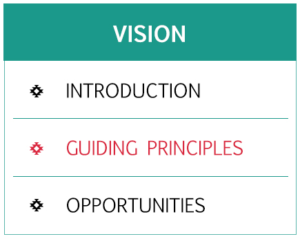Cultural heritage tourism can provide Indigenous communities with a way to generate income, alleviate poverty, increase access to health care and education, and conserve their cultural and natural resources. While the pandemic has temporarily impacted the tourism industry—and native communities disproportionately—the new Native American Tourism Development Plan provides Tribal Nations of South Dakota with a roadmap toward hope—toward economic and social well-being.
Making Connections
Our roadmap demonstrates the ways in which Tribal Nations of South Dakota can benefit from visitor spending. The state welcomed 14.5 million visitors in 2019, and they contributed $2.75 billion in GDP. But the Tribal Nations rarely benefited because there’s been no meaningful connectivity between their communities and the Black Hills, Badlands National Park and Sioux Falls.
Developing Attractions
From casinos and gaming to hunting and fishing to powwows, rodeos, fairs and sporting tournaments, Tribal Nations of South Dakota offer opportunities ripe for sustainable development—including 145 existing natural, cultural and heritage attractions and events as well as potential agritourism and culture assets.
Organizing Routes
There are four existing tourism routes positioned to guide visitors from major tourism hubs to Tribal Nation destinations: the Native American Scenic Byway, the Oyate and Yellowstone Trailsand I-29. With a range of nature- and culture-based attractions, each tourism route will offer distinct yet complementary experiences organized around themes to cater to priority markets: nature & outdoor recreation, agritourism, cultural heritage and summer events. Additionally, a Native American Events summer circuit will be developed to promote annual wacipis (pow wows), fairs, rodeos and other appropriate events across all nine Tribal Nations. This approach also ensures that tourism benefits are distributed equitably throughout the Očhéthi Šakówiŋ.


